Right this moment I’m instructing you the fundamentals it is advisable find out about how one can knead dough. Study why kneading is a vital and mandatory step in most yeasted bread recipes, how one can do it correctly, and how one can know when your dough has been kneaded lengthy sufficient and is able to rise. On this publish & video, I show 2 strategies I take advantage of, which you need to use with any yeast dough that requires kneading, whether or not you’re baking sandwich bread, cinnamon rolls, or do-it-yourself pizza.
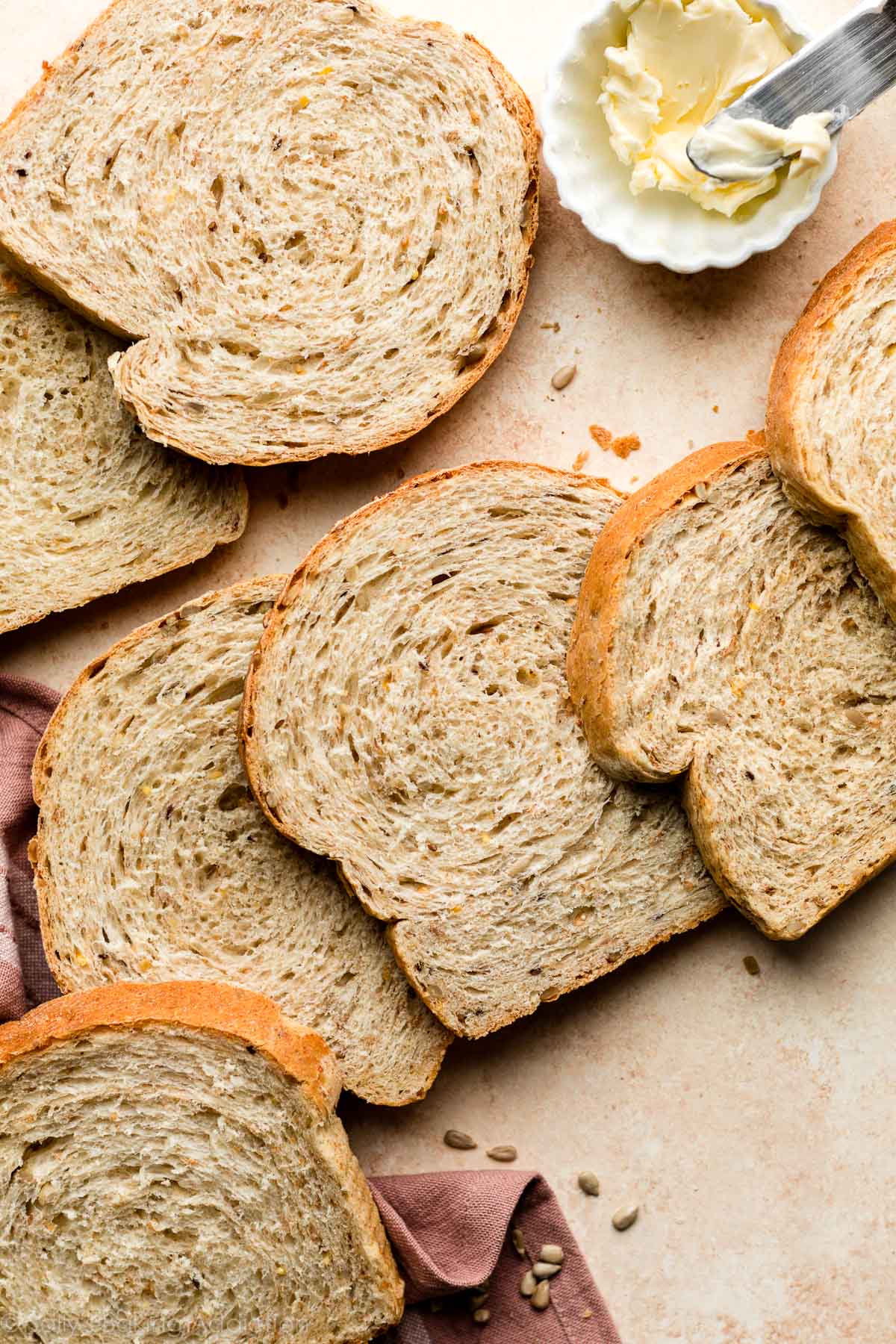
Regardless of the scrumptious style and alluring aroma of fresh-baked bread, many aspiring bakers hesitate to start the journey of do-it-yourself bread baking. I, too, averted it for a few years. There was simply no method I might attainable deal with a dough with yeast. How scary!
However the reality is that making yeasted bread is a surprisingly easy course of, so long as you have got dependable, approachable recipes and a primary understanding of how yeast works. (Plus, a bit of persistence!) The toughest half is, actually, discovering the braveness to only BEGIN.
By the way in which, in case you’re new to working with yeast, reference my Baking with Yeast Information for easy solutions to widespread yeast FAQs. It’s a massively useful place to begin, and can assist provide the base information wanted to efficiently embark in your bread baking journey. 😉
Right this moment’s publish is an extension of my Baking with Yeast Information. Right here I’m instructing you how one can knead dough. Kneading dough is a vital step in bread baking, whether or not you’re making gentle multigrain bread (pictured above), breadsticks, complete wheat bread, gooey raspberry candy rolls, or flaky dinner rolls (pictured under).
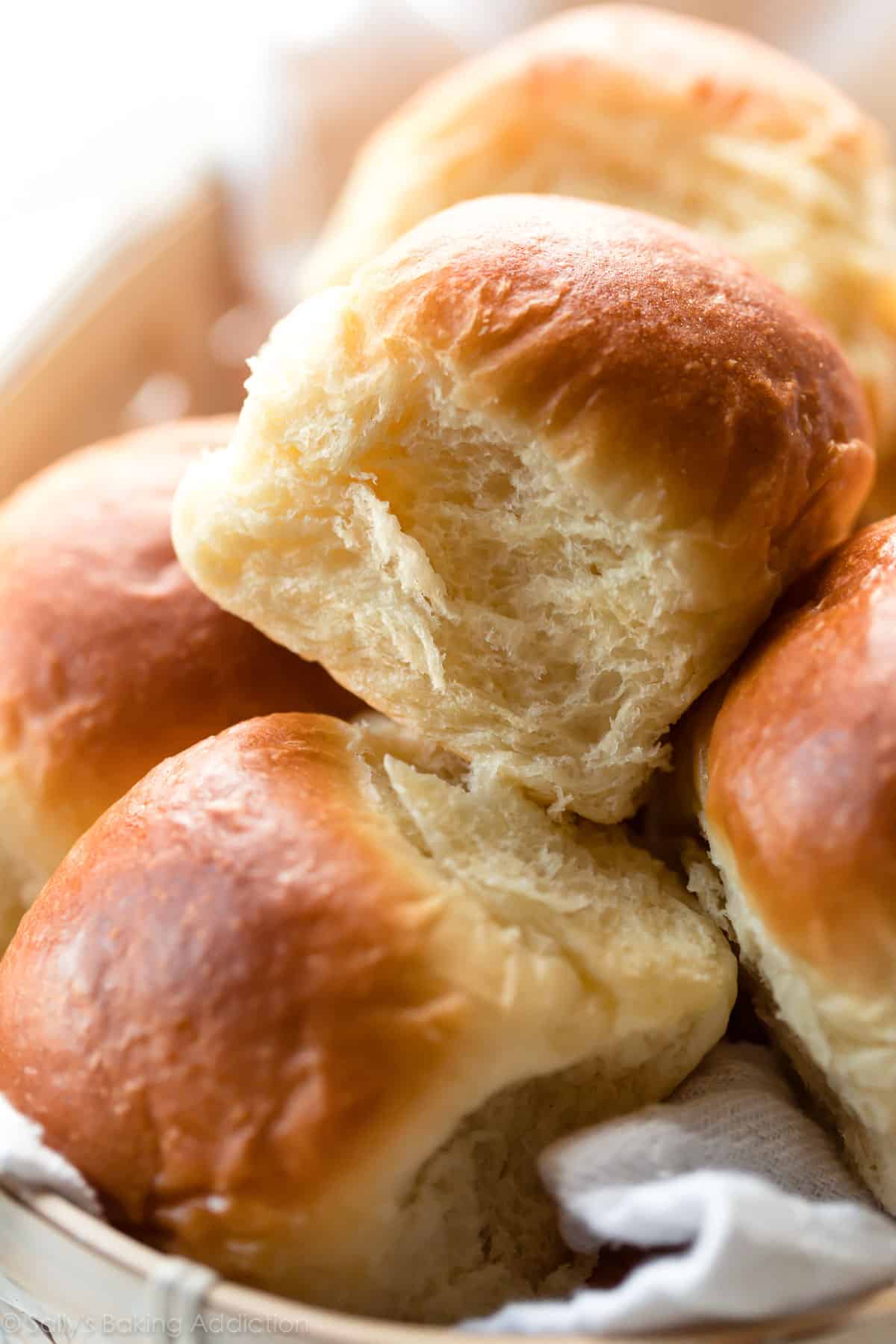
Why Do We Must Knead?
Kneading serves a pair functions.
First, we’re incorporating air into the dough. And second, we have to stretch out the gluten strands to construct construction and power into the bread. Merely mixing the dough collectively leaves us with a random, disorganized array of gluten proteins. We nonetheless should “develop” the gluten, i.e., encourage the proteins within the flour and moisture within the dough to hyperlink collectively and kind a robust gluten community. This construction permits for trapping of gasses so the bread will stand up good and excessive. And gluten is what makes bread deliciously chewy.
When you don’t knead your dough, your baked bread gained’t rise as excessive, and the general texture and look can be dense. Correctly kneaded dough guarantees a softer, fluffier, taller, and chewier bread.
OK, that’s your science class performed for in the present day!
I’ve made yeasted breads earlier than that don’t require kneading, and have a couple of revealed together with this no-knead honey oat bread, cranberry nut no-knead bread, 4-ingredient artisan bread, and this jalapeño cheddar bread. So what’s the distinction? These bread recipes use a really moist dough and a slow-rise technique, which permits for fermentation to happen because the extremely hydrated dough rests within the fridge for no less than 12 hours, and even longer.
Comparability Images
Check out the next image. On the left is a dense, squat, and crumbly loaf of sandwich bread. I didn’t knead the dough that produced this baked loaf. On the correct, I kneaded it because the recipe instructs. It’s the identical precise dough, solely the left was not kneaded.
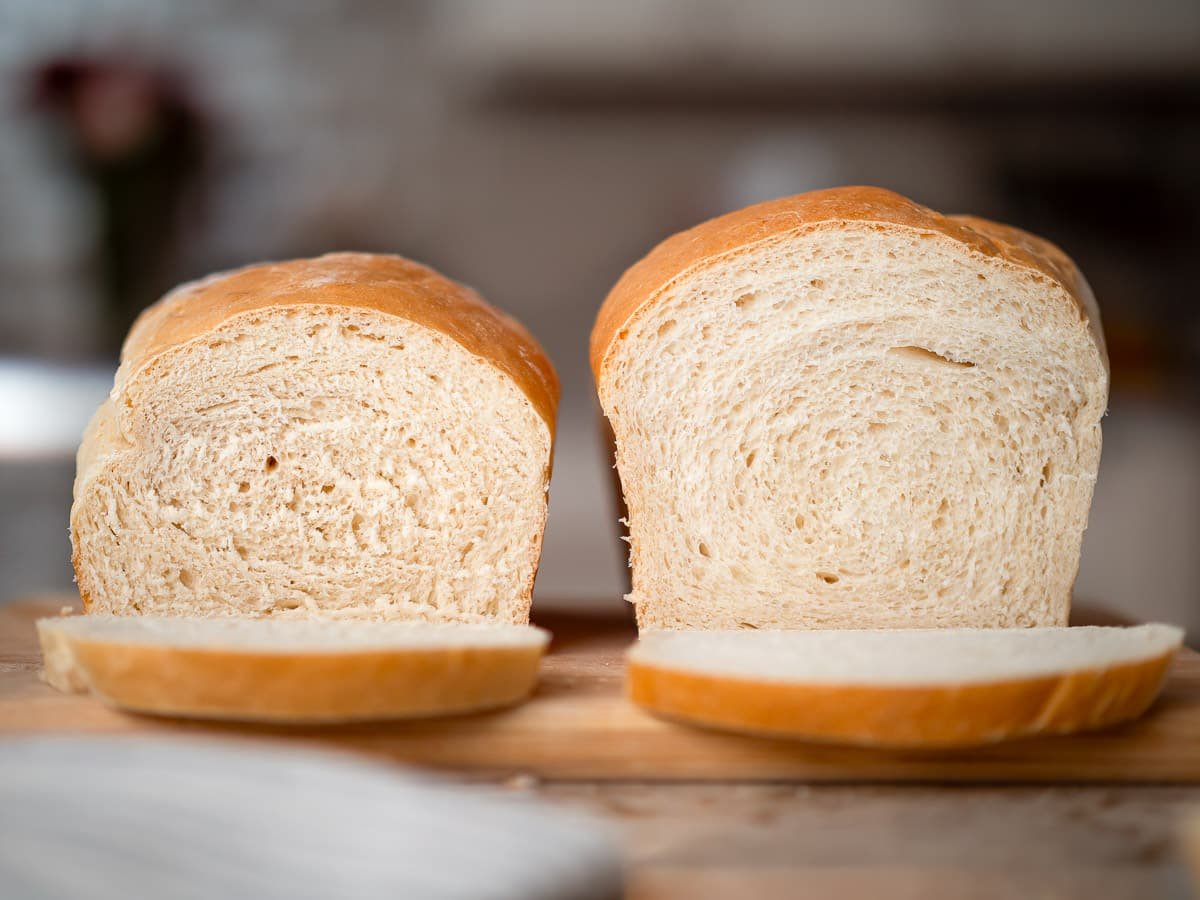
And, under, right here is that very same “not kneaded” loaf. As a result of I didn’t knead the dough, it didn’t have the power to entice the yeast’s gases.
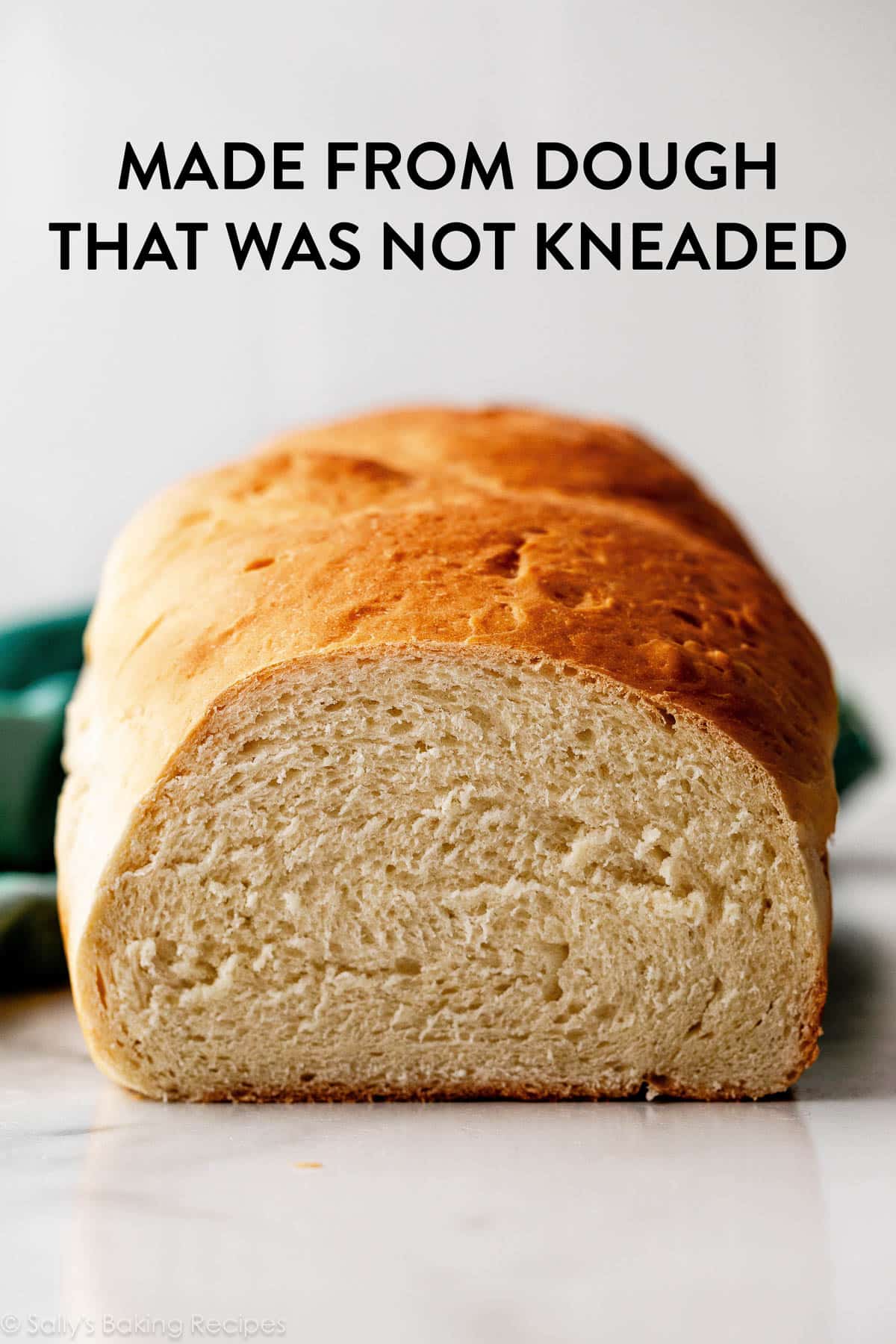
And now, the identical sandwich bread recipe, however I took the time to correctly knead the dough just like the recipe instructs. It’s a MAJOR distinction.
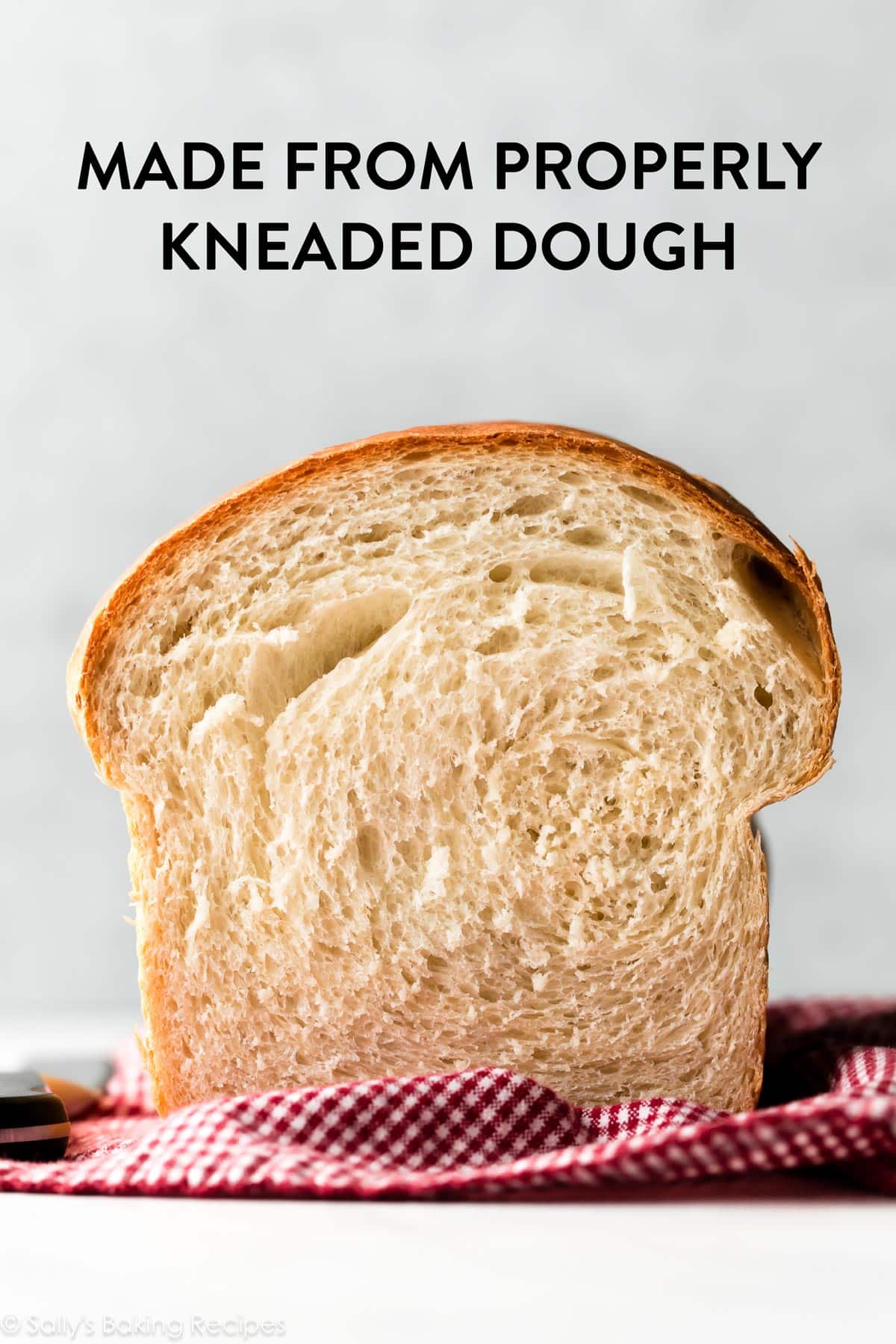
Learn how to Knead Dough by Hand
When you have a stand mixer with a dough hook attachment, you possibly can let the mixer run on low velocity and the dough hook can do the kneading, which makes the job hands-off; however I a lot choose to knead dough by hand, for a number of causes:
- First, some doughs will be actually heavy, and is likely to be an excessive amount of in your mixer to deal with.
- Letting a stand mixer do the work can probably result in over-kneading the dough. It’s lots more durable to over-knead dough along with your arms, since you get a great really feel for the dough, and can discover as the feel modifications. And in addition… you’ll probably get very drained earlier than you attain that time!
- And naturally, kneading by hand is a superb stress reliever—give it a strive!
When you choose to make use of your arms, too, right here’s what you’ll do: Utilizing the heels of your arms, gently push the dough away from you in a rocking movement, alternating arms as you go. You need to put some power into it, to actually stretch the dough out.
Video Tutorial
As you noticed within the video, after you’ve combined collectively your entire dough elements, it’s kneading time. Right here’s what you want:
- Clear onerous floor, similar to a countertop or a big reducing board.
- Small dish of all-purpose or bread flour, aka “bench flour.”
- A bench scraper is a great tool to have available; if the dough is sticking to your work floor, simply scrape it off with a bench scraper after which add a bit of extra flour to the floor.
Success Suggestions
- Don’t add any extra flour than you actually need—use simply sufficient to stop it from sticking an excessive amount of to your arms and work floor. The dough ought to nonetheless really feel a bit of cheesy.
- If the dough begins sticking to your arms, add a bit of extra flour to your arms, slightly than to the dough, so that you don’t throw off that cautious ratio of elements in your bread recipe.
- As you knead, you’ll begin to really feel the feel of the dough change; it’s going to start to easy out and really feel softer and extra elastic.
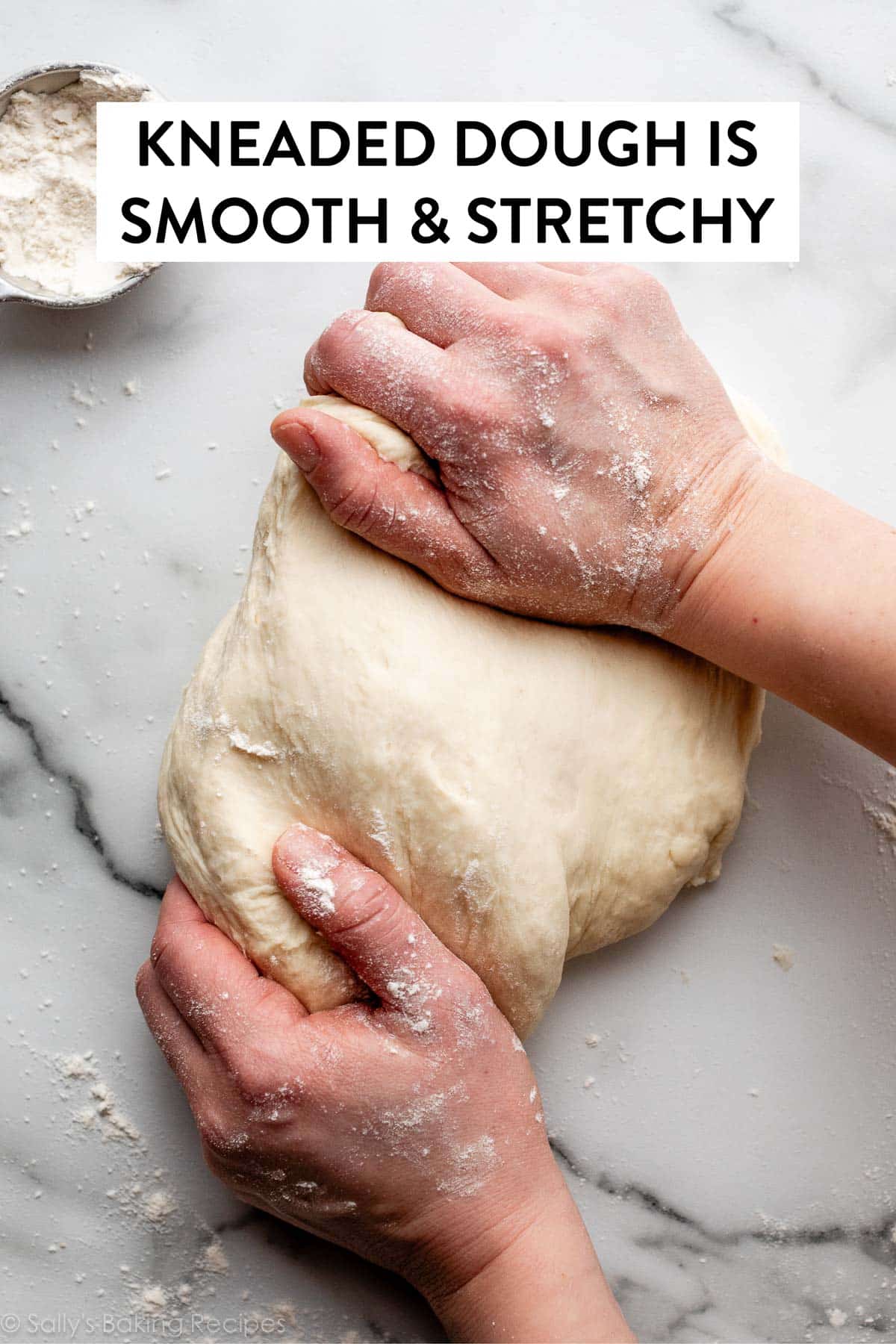
Learn how to Knead Additional Sticky Dough
When you have an particularly gentle or sticky dough, there’s one other kneading approach you need to use. I take advantage of this technique primarily with extra-soft wealthy doughs, similar to my in a single day cinnamon rolls. Wealthy doughs have extra fats in them (for instance, milk, butter, and egg), versus lean doughs like pizza dough and do-it-yourself bagels.
With the heel of your hand, push the dough out, then fold it again. Give the folded dough 1 / 4 flip, and repeat. Push it out, fold it again, and switch. This technique is a bit more light, and I discover it really works higher when you have got a very moist, sticky dough. You possibly can watch me do that within the video above.
Learn how to Know When Dough Has Been Kneaded Sufficient
How do we all know when the dough has been kneaded sufficient and is able to rise? I’ve two methods you possibly can check your dough for doneness:
The primary technique to examine is to easily poke the dough along with your finger. If the dough bounces again with out sticking to your finger, it’s been kneaded sufficient. If it doesn’t, it is advisable preserve kneading.
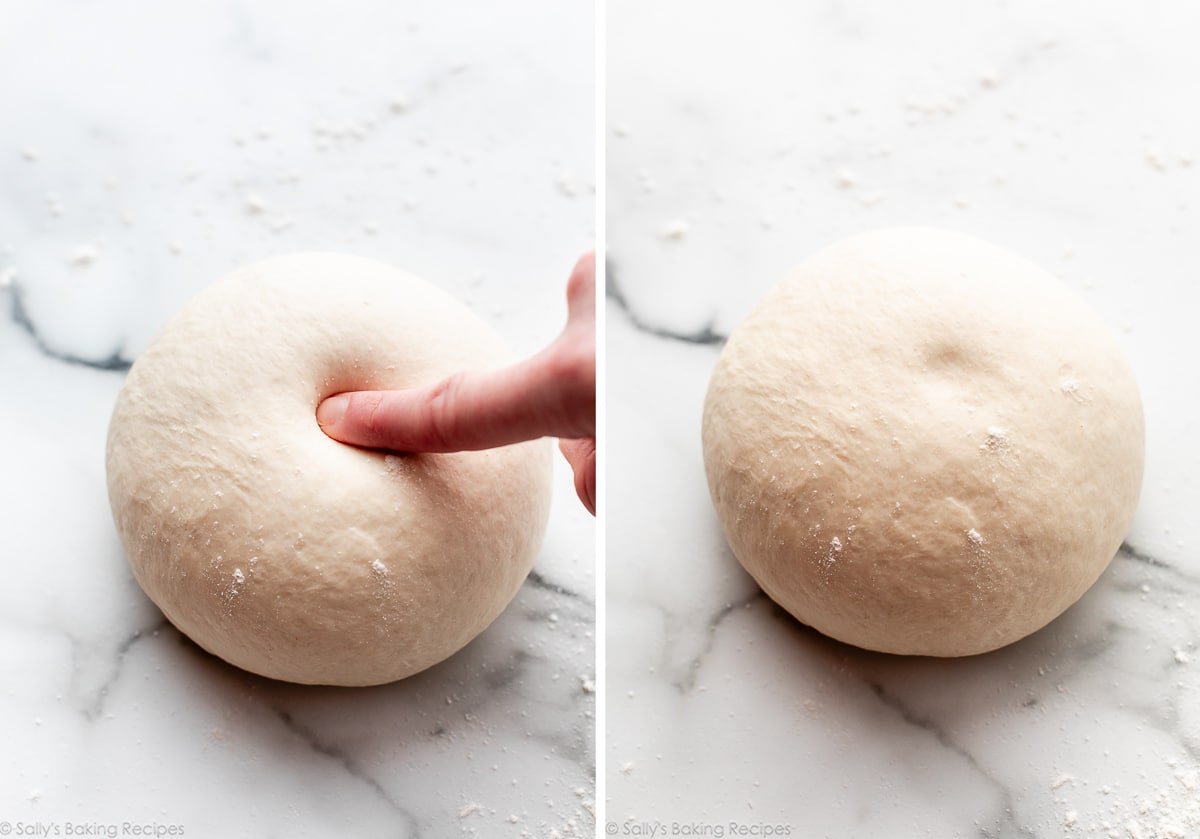
Windowpane Check for Dough
The second technique to examine in case your dough has been kneaded lengthy sufficient is one thing referred to as the windowpane check. Tear off a small piece of the dough, and stretch it out till you possibly can see some gentle coming via it. (Simply maintain it as much as a light-weight or window.) If the dough tears earlier than that time, then it is advisable preserve kneading a bit longer.
Kneading size varies tremendously in yeast bread recipes. Some doughs take simply 3–5 minutes, whereas others can take as much as 10–quarter-hour. For these longer knead instances, in case your arms are getting drained, be happy to pop the dough again into your stand mixer and use the dough hook for a couple of minutes to present your arms a break.
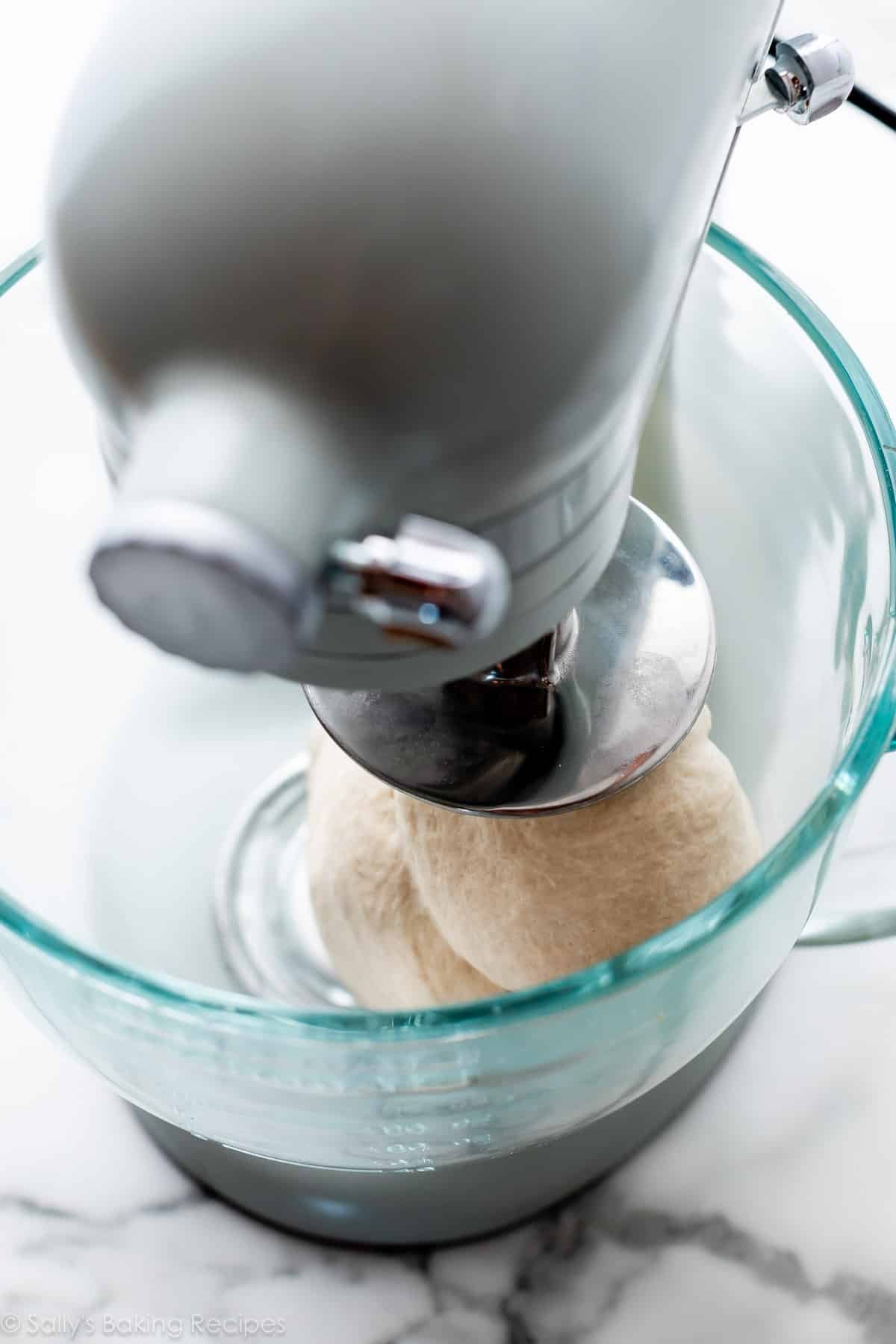
What Does Underneath-Kneaded Dough Look Like?
Dough that has not been kneaded, or hasn’t been kneaded lengthy sufficient seems lumpy, doesn’t stretch very effectively, and tears simply. In case your dough is like this, it wants extra kneading. Hold kneading it till it’s easy, stretchy, and extra pliable.
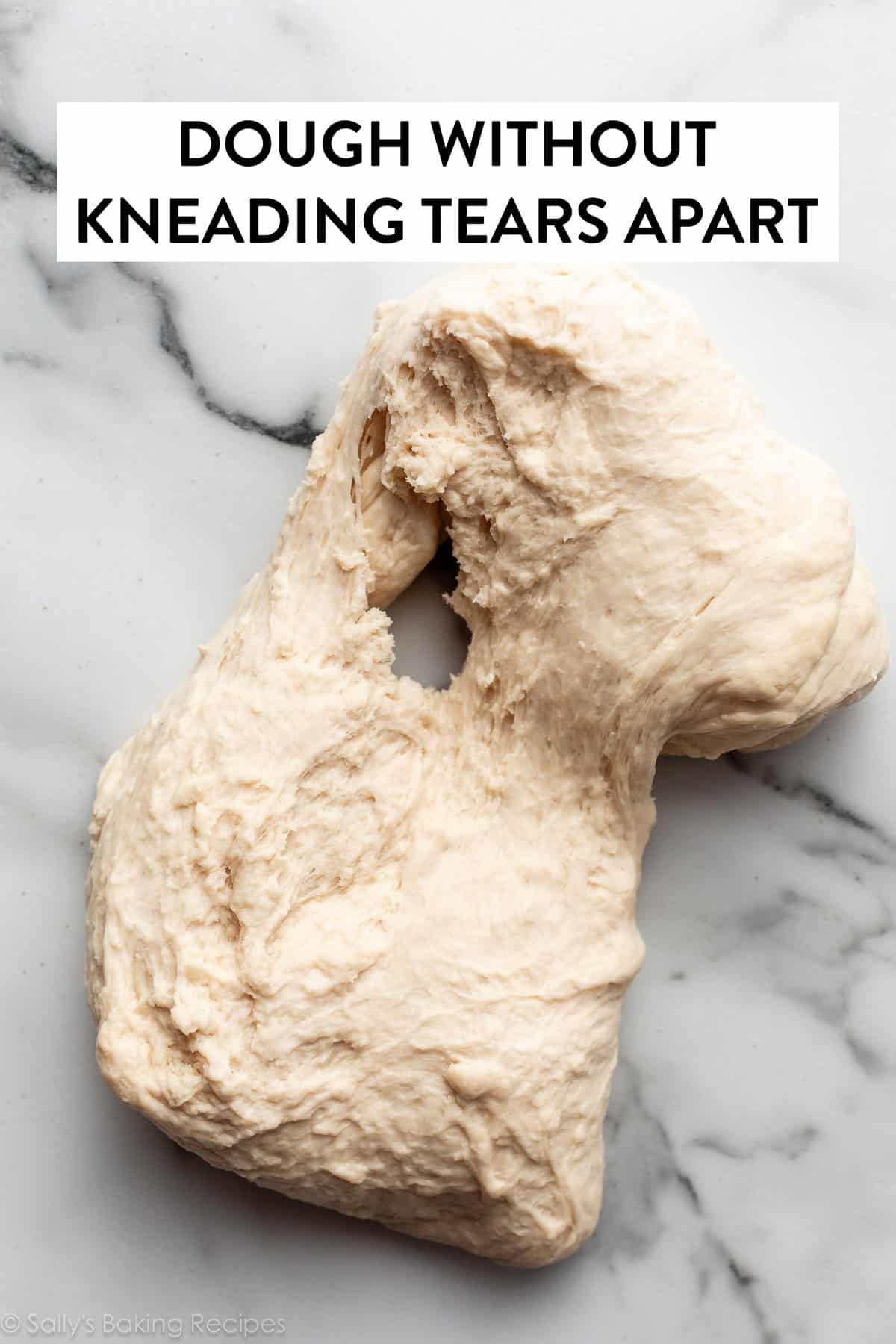
Clearly, kneading dough does take a while, however the effort is effectively value it, particularly since you are already taking the time to make bread from scratch. I feel you’ll discover it’s really one of the vital satisfying steps in bread-making (effectively, aside from the smelling and tasting elements on the finish). Silky easy, stretchy and cushiony… kneading dough is the unique stress reliever toy!
I hope this tutorial has been useful. Attempt my complete wheat bread in case you haven’t already!
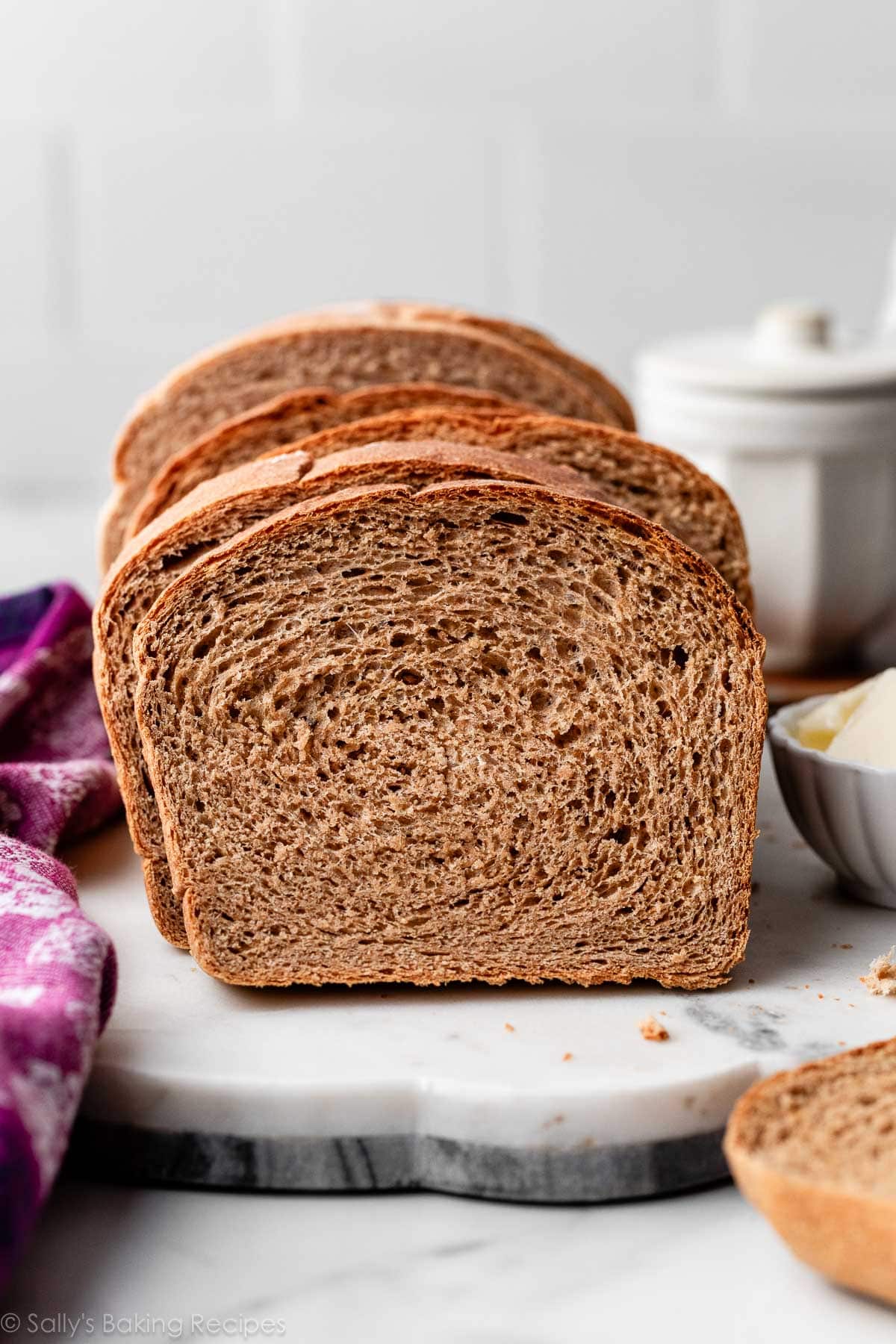
Newbie Bread Bakers, Begin With These:
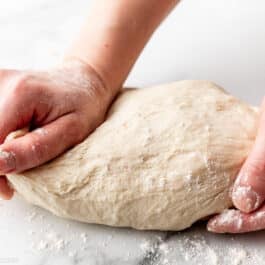
Learn how to Knead Dough By Hand
Prep Time: 10 minutes
Cook dinner Time: 0 minutes
Whole Time: 10 minutes
Yield: 1 dough
Class: Bread
Technique: Kneading
Delicacies: American
Description
Use this tutorial to information you thru a key step in yeast bread baking: kneading dough. See recipe Notes, and watch the video tutorial to assist. When you’re new to working with yeast, reference my Baking with Yeast Information for easy solutions to widespread yeast FAQs.
Directions
- Evenly flour your arms, work floor, and dough. Utilizing the heels of your arms, gently push the dough away from you in a rocking movement, alternating arms as you go. You need to put some power into it, to actually stretch the dough out. The dough could get sticky as you knead, and that’s effective. Simply sprinkle a bit of extra flour in your arms. Don’t add any extra flour than you actually need—use simply sufficient to stop it from sticking an excessive amount of to your arms and work floor. Dough ought to usually nonetheless really feel a bit of cheesy.
- As you knead, you’ll begin to really feel the feel of the dough change; it’s going to start to easy out and really feel softer and extra elastic. The size of time a dough requires kneading is determined by the recipe. Some doughs take simply 3–5 minutes, whereas others can take as much as 10–quarter-hour. For these longer knead instances, in case your arms are getting drained and you’ve got a stand mixer, be happy to pop the dough into your stand mixer bowl and use the dough hook for a couple of minutes to present your arms a break.
- 2 methods to examine the dough for doneness, and you need to use both or each: The first technique to examine is to easily poke the dough along with your finger. If the dough bounces again with out sticking to your finger, it’s been kneaded sufficient. If it doesn’t, it is advisable preserve kneading. The second technique to examine is one thing referred to as the “windowpane check.” Tear off a small (roughly golfball-size) piece of dough and gently stretch it out till it’s skinny sufficient for gentle to go via it. Maintain it as much as a window or gentle. Does gentle go via the stretched dough with out the dough tearing first? If that’s the case, your dough has been kneaded lengthy sufficient and is able to rise per your recipe’s directions. If not, preserve kneading.
Notes
- When you have an particularly gentle or sticky dough, there’s one other kneading approach you need to use. I take advantage of this technique primarily with extra-soft wealthy doughs. Wealthy doughs have extra fats in them (for instance, milk, butter, and egg), versus lean doughs like pizza dough. With the heel of your hand, push the dough out, then fold it again. Give the folded dough 1 / 4 flip, and repeat. Push it out, fold it again, and switch. This technique is a bit more light, and I discover it really works higher when you have got a very moist, sticky dough.
- Can I Knead Dough with a Hand Mixer? No, I don’t advocate it. The dough will simply get caught within the beaters. Use a stand mixer or knead by hand.